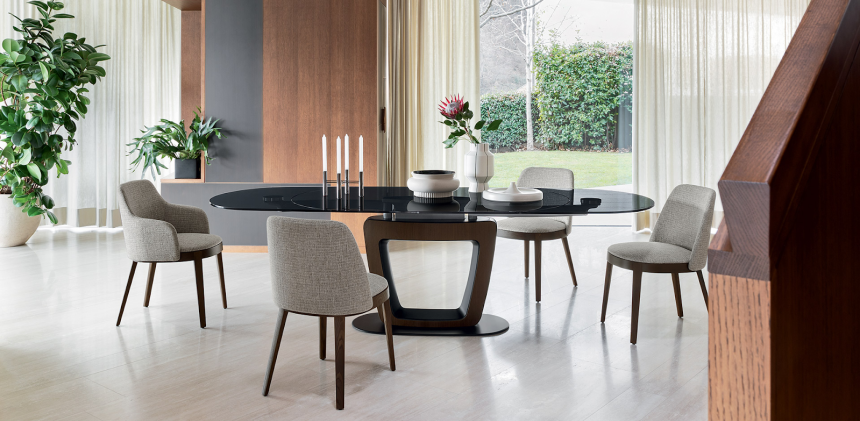Italian and Scandinavian furniture both sit under the umbrella of “modern design,” yet they could not feel more different. Both emerged from the same 20th-century minimalism that rejected clutter and embraced clarity, but what they did with that clarity tells two different cultural stories. One celebrates emotion and flair; the other exalts restraint and purpose. To understand these differences, you have to look beyond the furniture itself—to the climates, philosophies, and values that shaped them.
The Italian Relationship with Beauty
Italian furniture is the product of a culture that refuses to separate beauty from function. In Italy, design is not decoration; it’s identity. From the Renaissance through modern Milan, Italians have treated proportion, light, and materials as expressions of emotion. The Italian approach begins with how it makes you feel, not what it can do.
An Italian dining table is not just a surface—it’s a performance. The lines flow, the materials contrast, and every curve carries intent. Gloss meets matte, leather meets glass, and marble meets wood, always in dialogue. It’s sensual, expressive, and unapologetically confident. Italian design never hides its luxury—it celebrates it. It tells you that living beautifully is not indulgent but essential.
Even contemporary brands like Calligaris hold onto this DNA. Their collections balance sculptural form with livable comfort, maintaining that emotional link between maker and space. In the Italian mind, furniture doesn’t just fill a room—it animates it.
If you’re in Tysons, explore Calligaris Virginia. Their curated collection captures what modern Italian design should be—emotional, human, and beautifully usable. Step inside their showroom or browse online to see how two design philosophies, born from opposite ends of Europe, can coexist in perfect harmony within your home.
The Scandinavian Pursuit of Calm
In the north, design took a different path. Scandinavian furniture was born in a world of long winters, limited daylight, and quiet endurance. Where Italians saw abundance, Scandinavians saw scarcity—and designed around it.
Scandinavian furniture is rooted in humility. The goal is not to astonish but to reassure. Lines are clean, forms are functional, and materials are natural—birch, oak, wool, and linen. Everything feels intentional but never forced. There’s warmth in its simplicity, comfort in its restraint.
The Scandinavian designer believes beauty emerges from purpose. If a chair supports your body perfectly and lasts for decades, that’s beauty enough. This design language invites stillness. It asks you to slow down, to appreciate honesty and texture instead of ornament and flair.
In a Scandinavian living room, the furniture fades into the rhythm of daily life. It creates serenity rather than spectacle—a visual expression of balance and mindfulness.
Form and Philosophy: Emotion vs. Empathy
The true difference between these two schools of design isn’t just how they look—it’s what they believe furniture should do.
Italian design wants to stir your senses. It wants the room to feel alive. Every shape is infused with personality, every detail engineered to seduce the eye. It’s about emotion, theater, and timeless confidence.
Scandinavian design, in contrast, is about empathy. It respects the user’s space and time. It seeks quiet perfection, not applause. The success of the design is measured not by how loudly it speaks, but by how effortlessly it supports your life.
In essence, Italian design says, “Look at me.” Scandinavian design says, “Live with me.” Neither is superior—they simply serve different temperaments. The bold and expressive may find comfort in Italy’s sensuality, while the contemplative will find peace in Scandinavia’s restraint. Yet when these philosophies meet, they complement each other: Italian design brings energy to stillness, and Scandinavian design brings calm to passion.
Bridging the Two Worlds
In modern interiors, the most compelling spaces often merge these two philosophies. Italian craftsmanship can provide the emotional centerpiece—a dining table, a sofa, a statement lamp—while Scandinavian elements ground the room in comfort and simplicity. Together, they create homes that feel both expressive and livable.
Lynn Martelli is an editor at Readability. She received her MFA in Creative Writing from Antioch University and has worked as an editor for over 10 years. Lynn has edited a wide variety of books, including fiction, non-fiction, memoirs, and more. In her free time, Lynn enjoys reading, writing, and spending time with her family and friends.















